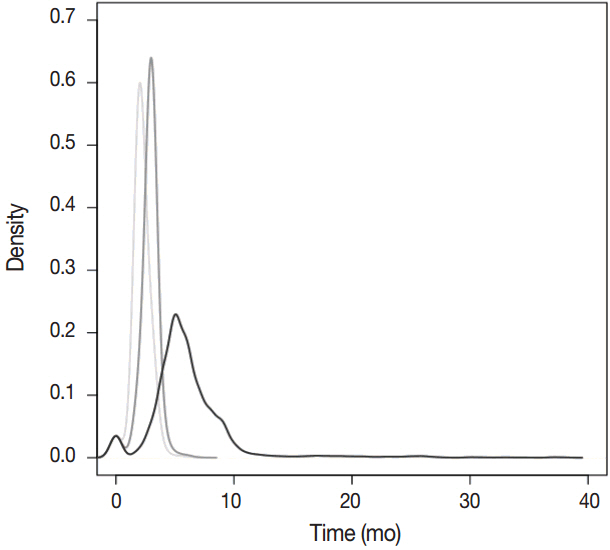J Pathol Transl Med.
2017 Mar;51(2):137-147. 10.4132/jptm.2016.12.30.
Current Status of Pathologic Examinations in Korea, 2011–2015, Based on the Health Insurance Review and Assessment Service Dataset
- Affiliations
-
- 1Department of Pathology, Asan Medical Center, University of Ulsan College of Medicine, Seoul, Korea. byeon.sunju@welovedoctor.com
- KMID: 2372962
- DOI: http://doi.org/10.4132/jptm.2016.12.30
Abstract
- BACKGROUND
Pathologic examinations play an important role in medical services. Until recently, the overall status of pathologic examinations in Korea has not been identified. I conducted a nationwide survey of pathologic examination status using the insurance reimbursements (IRs) dataset from the Health Insurance Review and Assessment Service (HIRA). The aims of this study were to estimate current pathologic examination status in Korea and to provide information for future resource arrangement in the pathology area.
METHODS
I asked HIRA to provide data on IR requests, including pathologic examinations from 2011 to 2015. Pathologic examination status was investigated according to the following categories: annual statistics, requesting department, type of medical institution, administrative district, and location at which pathologic examinations were performed.
RESULTS
Histologic mapping, immunohistochemistry, and cervicovaginal examinations have increased in the last 5 years. Internal medicine, general surgery, obstetrics/gynecology, and urology were the most common medical departments requesting pathologic examinations. The majority of pathologic examinations were frequently performed in tertiary hospitals. About 60.3% of pathologic examinations were requested in medical institutions located in Seoul, Gyeonggi-do, and Busan. More than half of the biopsies and aspiration cytologic examinations were performed using outside services. The mean period between IR requests and 99 percentile IR request completion inspections was 6.2 months.
CONCLUSIONS
This survey was based on the HIRA dataset, which is one of the largest medical datasets in Korea. The trends of some pathologic examinations were reflected in the policies and needs for detailed diagnosis. The numbers and proportions of pathologic examinations were correlated with the population and medical institutions of the area, as well as patient preference. These data will be helpful for future resource arrangement in the pathology area.
Figure
Reference
-
1. Byeon SJ, Kim WH. Analysis of surgical pathology data in the HIRA database: emphasis on current status and endoscopic submucosal dissection specimens. J Pathol Transl Med. 2016; 50:204–10.
Article2. Kim L, Kim JA, Kim S. A guide for the utilization of Health Insurance Review and Assessment Service National Patient Samples. Epidemiol Health. 2014; 36:e2014008.
Article
- Full Text Links
- Actions
-
Cited
- CITED
-
- Close
- Share
- Similar articles
-
- Analysis of Surgical Pathology Data in the HIRA Database: Emphasis on Current Status and Endoscopic Submucosal Dissection Specimens
- Emerging New Era of Mobile Health Technologies
- Book Review: Principles of Health Interoperability HL7 and SNOMED
- The CDA Book
- Dilemmas Within the Korean Health Insurance System


